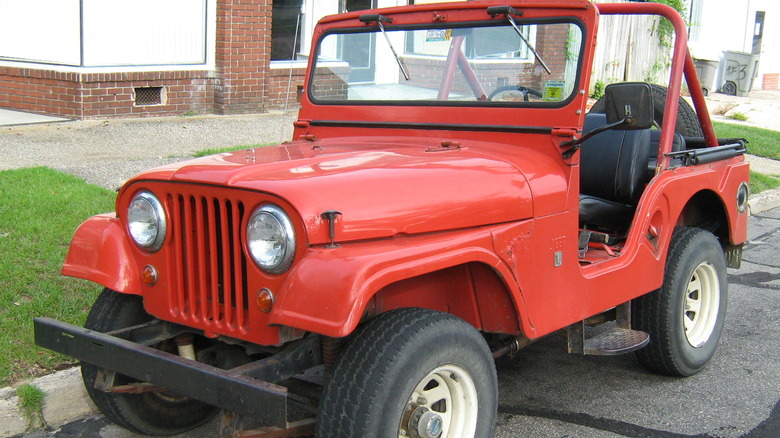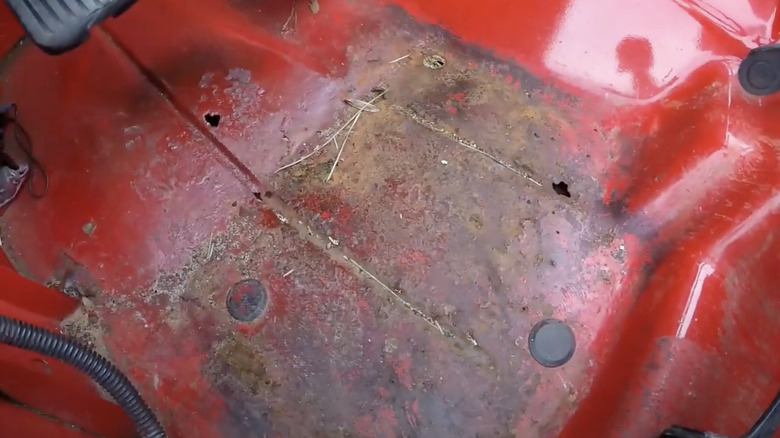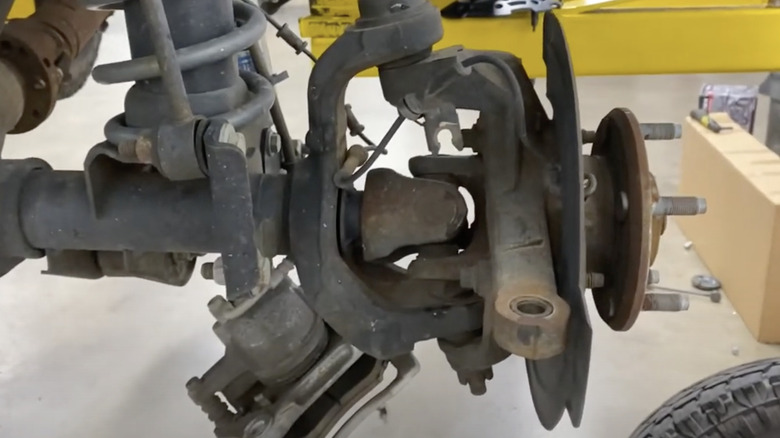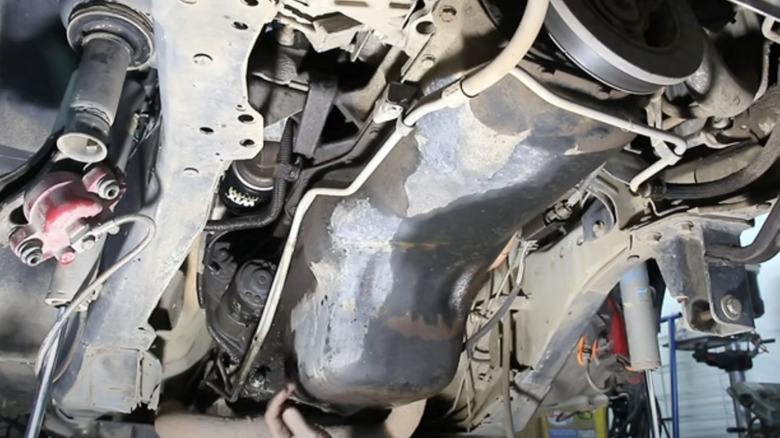Things You Should Look For When Buying A Vintage Jeep
Jeeps have been around since World War II, when WIllys Overland built a light troop and gear carrier for the U.S. Army and its allies. That utilitarian beast evolved into the CJ line, which stayed in Jeep's lineup until the Wrangler replaced it in 1987. The Jeep Wrangler is still in production, with Jeep offering a handful of robust powertrain options in 2024. The Jeep brand is now owned by Stellantis, which was formed a few years ago by the merger of Fiat Chrysler and the Peugeot group.
Newer Jeeps haven't lived up to their fathers and grandfathers in terms of reliability and durability, with Consumer Reports ranking the brand dead last among American labels for the 2022 model year (via TimothyAbeel.com). That's a stark contrast to older models, many of which were equipped with Jeep's notoriously reliable 4.0-liter inline six-cylinder engine. But lots of Jeeps have been driven hard and taken off-road, which can cause problems as they age. If you're considering buying a classic Jeep like a CJ, first-generation YJ Jeep Wrangler, or XJ series Jeep Cherokee, here are the things you should check before handing over your cash.
[Featured image by CZMarlin via Wikimedia Commons|Cropped and scaled|Public Domain]
Check these areas for rust damage
Jeeps are meant to be taken off-road, and this can mean using them in snowy and muddy conditions, and even crossing a stream or two. The removable top makes CJs and Wranglers popular in coastal areas, where salt in the air or from road treatment can corrode metal quickly. The floor pans, rocker panels, and frame are particularly prone to rust.
Remove the floor mats and peel carpeting back from the sides of the interior to check for rust holes in the floor and sills, and crawl underneath and give everything a good poke with a screwdriver. That's also a good test for any apparent rust spots on the frame. Surface rust can be sanded and repainted, but a frame that crumbles when prodded is a sign that you should walk away and find another Jeep.
Check for previous frame repair; freshly painted or welded segments are obvious signs this work has been done. If the rocker panels have been covered with rock sliders (metal guards on the panels), ask the seller to remove them so you can make sure they're not hiding severe rust damage. Inspect the body mounts carefully; they rust easily, and rot here can mean a difficult repair. Most other rusty body segments can be replaced more easily, so this doesn't have to be a dealbreaker if you can knock those replacement costs off the asking price.
Check steering and suspension components carefully.
Water and constant vibration from off-road use can also wreak havoc on a Jeep's steering and suspension components. Crawl under the Jeep and inspect the ball joints, tie-rod ends, spring bushings, and mount points. Jeeps use several different styles of universal joints in the axles and driveshafts, and these components can be stressed when suspension or body lifts are added. There shouldn't be excessive play in any of the joints, so give everything a good shake while the Jeep is parked safely on the ground.
During your test drive, you shouldn't feel any excessive vibration or hear a grinding or clunking noise when making turns, accelerating, or going over bumps. These can be signs that one or more steering or suspension parts are ready for replacement. Ball joint failure at speed can cause you to lose a wheel, and if a driveshaft U-joint breaks, you'll be stranded. Check for play in the steering shaft where it meets the column and steering box, as well as in the U-joint in the shaft.
There are a few places to check for fluid leaks
Jeep's four-liter inline six has been known to run as long as a half-million miles, but it's not without its foibles. This engine and its older brother, the carbureted 4.2-liter I6, are prone to leaking oil in some common spots like the valve covers, oil pan, and rear main seal. The latter two components can be replaced in tandem on the 4.0 with the right tools, while many vehicles require the removal of the transmission to replace the rear main seal.
Oil can also escape from a bad crankshaft seal at the front of the engine, but identifying the precise source of a leak can be hard to do in the short time you have to inspect a potential purchase. Small oil leaks aren't a huge problem if the owner has been diligent about checking and topping off the oil, but oil starvation can wreck an engine.
The differential housings sometimes take a beating when a Jeep is used in rocky terrain, so check the seals on the round casings at the center of each axle. Replacing the differential seals and fluid is a fairly quick and easy job, but rebuilding a differential that has been run dry and has damage to the gearset is a several-hundred-dollar DIY job and one that can cost thousands if done by a professional.



